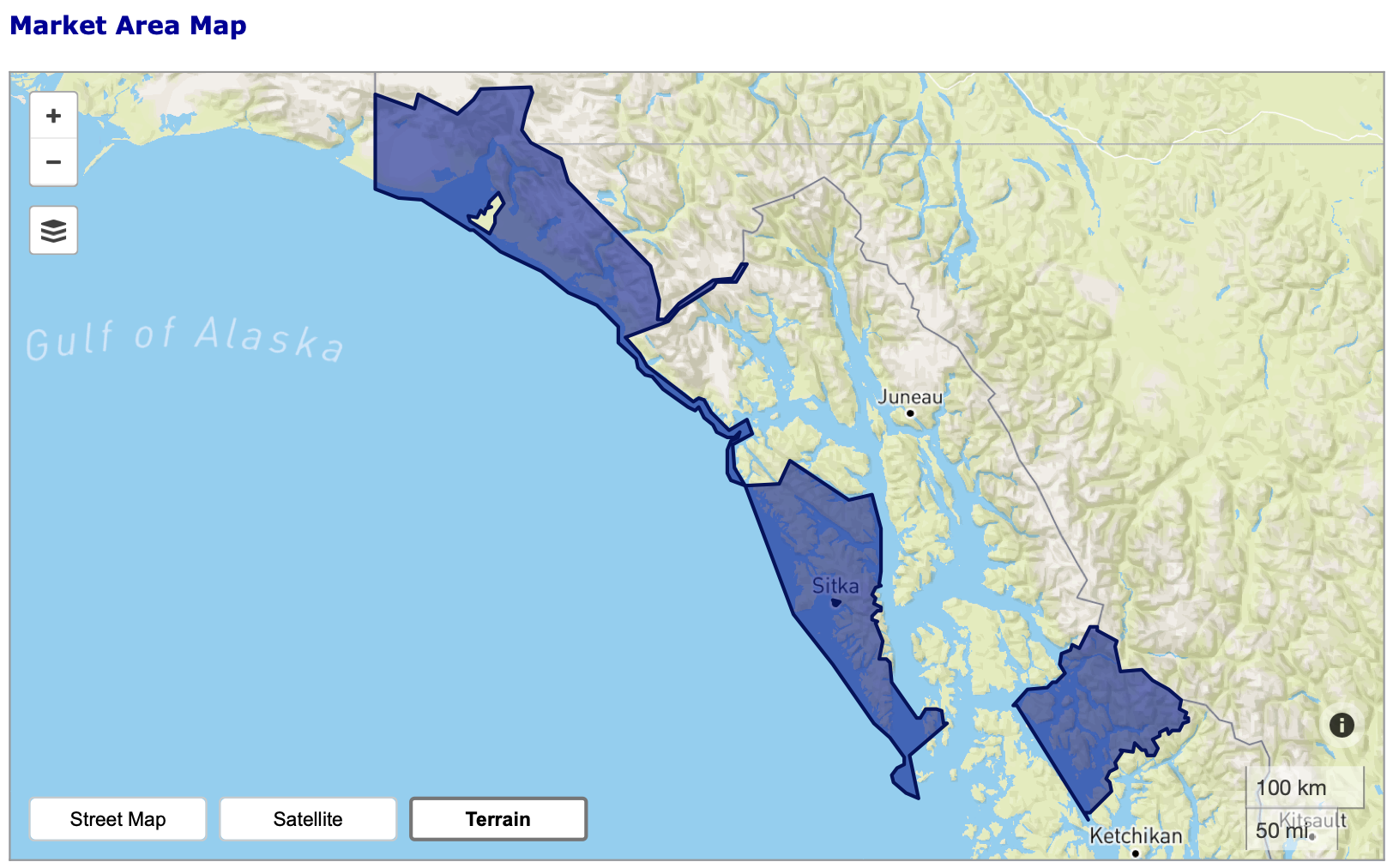Indianz.Com > News > Tlingit and Haida Tribes secure wireless spectrum license in Alaska

Tlingit & Haida Granted 2.5 GHz Wireless Spectrum License
Tuesday, August 24, 2021
Source: Central Council of the Tlingit and Haida Indian Tribes
The following is the text of an August 24, 2021, news release from the Central Council of the Tlingit and Haida Indian Tribes.
JUNEAU, Alaska — The Central Council of the Tlingit & Haida Indian Tribes of Alaska (Tlingit & Haida) is one step closer to providing access to improved broadband services in Southeast Alaska. The Federal Communications Commission (FCC) formally accepted Tlingit & Haida’s application for a 2.5 GHz Rural Tribal Priority Window (TPW) license after final review of the requirements for the assignment of the spectrum.
The 2.5 GHz TPW was offered by the FCC in 2019 to all federally recognized tribes where spectrum was available for assignment at no cost. The TPW provided a unique opportunity for tribes in rural areas to gain access to prime mid-band spectrum to deploy broadband and other next-generation wireless services.
According to the FCC, the 2.5 GHz band is suitable for both mobile coverage and fixed point-to-point uses. Known as Educational Broadband Service (EBS), the spectrum was little used, but with advances in technology, it is now positioned to be an important role in the deployment of broadband and other advanced communications services.

Search
Filed Under
Tags
More Headlines
Native America Calling: Native Bookshelf with Tanya Talaga
Native America Calling: Where Donald Trump finds support among Native Americans
AUDIO: Subcommittee Markup of Fiscal Year 2026 Interior, Environment, and Related Agencies Bill
AUDIO: H.R.410, the Alaska Native Vietnam Era Veterans Land Allotment Extension Act
AUDIO: H.R.504, the Miccosukee Reserved Area Amendments Act
Statement: William “Billy” Kirkland nomination hearing as Assistant Secretary for Indian Affairs
Native America Calling: Tribes insist on protections for wolves in the face of public pressures
George Ochenski: Another shameful chapter in treatment of tribal nations
Montana Free Press: Tribes challenge changes in voter registration laws
Cronkite News: Democrats head to primary to fill seat of the late Raúl Grijalva
House of Representatives adds two Indian Country bills to agenda
Tom Cole: The ‘One Big Beautiful Bill’ is a win for America
NAFOA: 5 Things You Need to Know this Week (July 14, 2025)
Chuck Hoskin: Cherokee Nation focuses on culture
Native America Calling: What the Texas flash floods teach us about emergency preparedness
More Headlines
Native America Calling: Where Donald Trump finds support among Native Americans
AUDIO: Subcommittee Markup of Fiscal Year 2026 Interior, Environment, and Related Agencies Bill
AUDIO: H.R.410, the Alaska Native Vietnam Era Veterans Land Allotment Extension Act
AUDIO: H.R.504, the Miccosukee Reserved Area Amendments Act
Statement: William “Billy” Kirkland nomination hearing as Assistant Secretary for Indian Affairs
Native America Calling: Tribes insist on protections for wolves in the face of public pressures
George Ochenski: Another shameful chapter in treatment of tribal nations
Montana Free Press: Tribes challenge changes in voter registration laws
Cronkite News: Democrats head to primary to fill seat of the late Raúl Grijalva
House of Representatives adds two Indian Country bills to agenda
Tom Cole: The ‘One Big Beautiful Bill’ is a win for America
NAFOA: 5 Things You Need to Know this Week (July 14, 2025)
Chuck Hoskin: Cherokee Nation focuses on culture
Native America Calling: What the Texas flash floods teach us about emergency preparedness
More Headlines